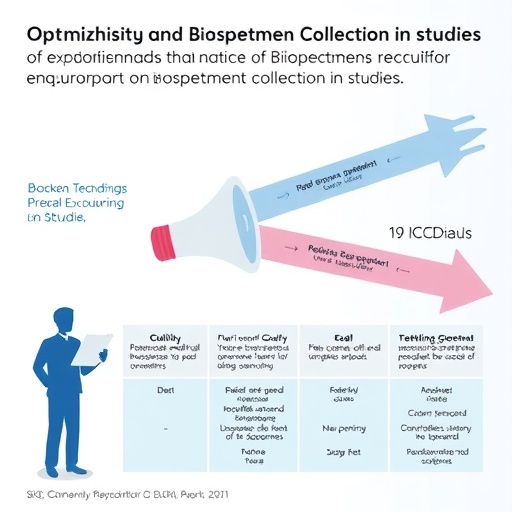The rise of polypharmacy in contemporary medicine has sparked considerable debate, particularly regarding its impact on elderly populations. This complex issue, which involves the concurrent use of multiple medications by a patient, may not just lead to adverse drug reactions, but could also trigger a phenomenon known as “prescribing cascades.” These cascades occur when the side effects of one medication lead to the prescription of additional drugs to treat those side effects, ultimately compounding the patient’s medication load. A recent study conducted by Dr. Michael Wehling investigates whether this concept of prescribing cascades is essential for understanding the challenges faced by clinicians, particularly in geriatric care.
The concept of prescribing cascades and its implications are often overlooked in clinical settings. As healthcare providers strive to optimize the management of chronic diseases in older adults, they may inadvertently initiate prescribing cascades. This leads to a cycle of escalating treatments that poses significant risks to patients who may be more sensitive to the adverse effects of medications. The complexity of managing multiple health conditions often means that the benefits of one medication can become overshadowed by the side effects caused by another.
Dr. Wehling’s inquiry dives deep into the link between polypharmacy and prescribing cascades. At the heart of this evaluation is the recognition that elderly patients often have comorbidities requiring multiple treatments. The foundational issue lies in the presumption that all prescribed medications are necessary and will result in positive health outcomes. Instead, there is an urgent need for vigilance and awareness regarding the potential for a single prescribed medication to create a domino effect leading to more prescriptions, thereby complicating the therapeutic landscape.
The study emphasizes the necessity for healthcare providers to engage in holistic medication reviews. This should not merely focus on the clinical efficacy of medications, but also take into account the patient’s full pharmacological history and potential interactions. A thorough review could help in identifying instances where a patient is experiencing adverse effects that are being masked rather than treated, ultimately minimizing the occurrence of prescribing cascades.
Moreover, the implications for healthcare policy and education are profound. Enhanced training focused on the principles of pharmacology and patient-centered care can equip healthcare professionals with the tools they need to identify and prevent prescribing cascades. By fostering an environment that emphasizes careful medication management and communication with patients, clinicians can greatly reduce the chances of unnecessary complications from polypharmacy.
In the context of geriatric medicine, further exploration of the efficacy of medication reconciliation processes is essential. Implementing protocols that prioritize regular evaluation of a patient’s medication list can assist clinicians in recognizing medications that may no longer be needed or those that are causing adverse effects. Such practices not only seek to improve the quality of life for older adults but also promote more cost-effective healthcare delivery by limiting unnecessary prescriptions.
Interestingly, the concept of prescribing cascades carries significant implications beyond individual patient care. It highlights systemic issues within healthcare practices, emphasizing the need for interdisciplinary approaches that involve collaboration among physicians, pharmacists, and nurse practitioners. This collaboration can ensure that every aspect of the patient’s care plan is well-coordinated, minimizing the risks associated with polypharmacy while maximizing therapeutic efficacy.
The primary challenge remains: understanding and defining when a prescribing cascade occurs versus when a new medication is simply necessary for a patient’s evolving health status. Dr. Wehling’s study encourages medical professionals to ask critical questions around prescribing practices, challenging the traditional norms that have governed medication prescriptions for decades. It suggests a paradigm shift towards more cautious and thoughtful prescribing processes, especially among the vulnerable elderly demographic.
Another key element in this discussion is the role of technology in medication management. The integration of electronic health records and decision-support systems can aid in flagging potential prescribing cascades. These tools can provide alerts for healthcare providers when new medications could lead to complications, stemming from previously prescribed drugs. This not only enhances patient safety but also fosters a culture that values proactive and preventive care.
As this concept continues to unfold, the healthcare community must engage in rigorous discussions about how to best frame the dialogue around prescribing cascades within clinical practice. A clear understanding of the implications of these cascades may lead to more informed decision-making among clinicians and patients alike, ultimately resulting in improved patient outcomes.
The discourse surrounding prescribing cascades is far from conclusive. As new studies emerge and more data becomes available, it is imperative for the healthcare sector to adapt and evolve in its approach to polypharmacy. Dr. Wehling’s work serves as a critical reminder of the need for balance in medication prescribing, fostering an integrated system that emphasizes both health and quality of life for patients.
In conclusion, Dr. Wehling’s investigation into the necessity of the prescribing cascades construct in understanding geriatric health presents a compelling case for re-evaluating how medications are prescribed and managed. With the increasing prevalence of polypharmacy in today’s aging population, the healthcare community is compelled to confront and address the risks associated with this practice. The implications of his findings extend beyond clinical care and suggest broader reforms in medical education and healthcare policy that prioritize safe, effective care for our most vulnerable populations.
Subject of Research: Prescribing Cascades and Polypharmacy in Elderly Patients
Article Title: Prescribing Cascades: Do We Need This Construct?
Article References:
Wehling, M. Prescribing cascades: do we need this construct?.
Eur Geriatr Med (2025). https://doi.org/10.1007/s41999-025-01311-y
Image Credits: AI Generated
DOI: https://doi.org/10.1007/s41999-025-01311-y
Keywords: Prescribing cascades, polypharmacy, geriatric medicine, medication management, healthcare policy.
Tags: adverse drug reactions in older adultscomplexity of medication managementhealthcare provider challenges in geriatricsimplications of prescribing cascades in healthcareimproving medication safety in elderly caremanaging chronic diseases in seniorsoptimizing treatment for elderly populationspolypharmacy impact on geriatric careprescribing cascades in elderly patientsrisks of multiple medicationsside effects leading to additional prescriptionsunderstanding prescribing patterns in older patients





